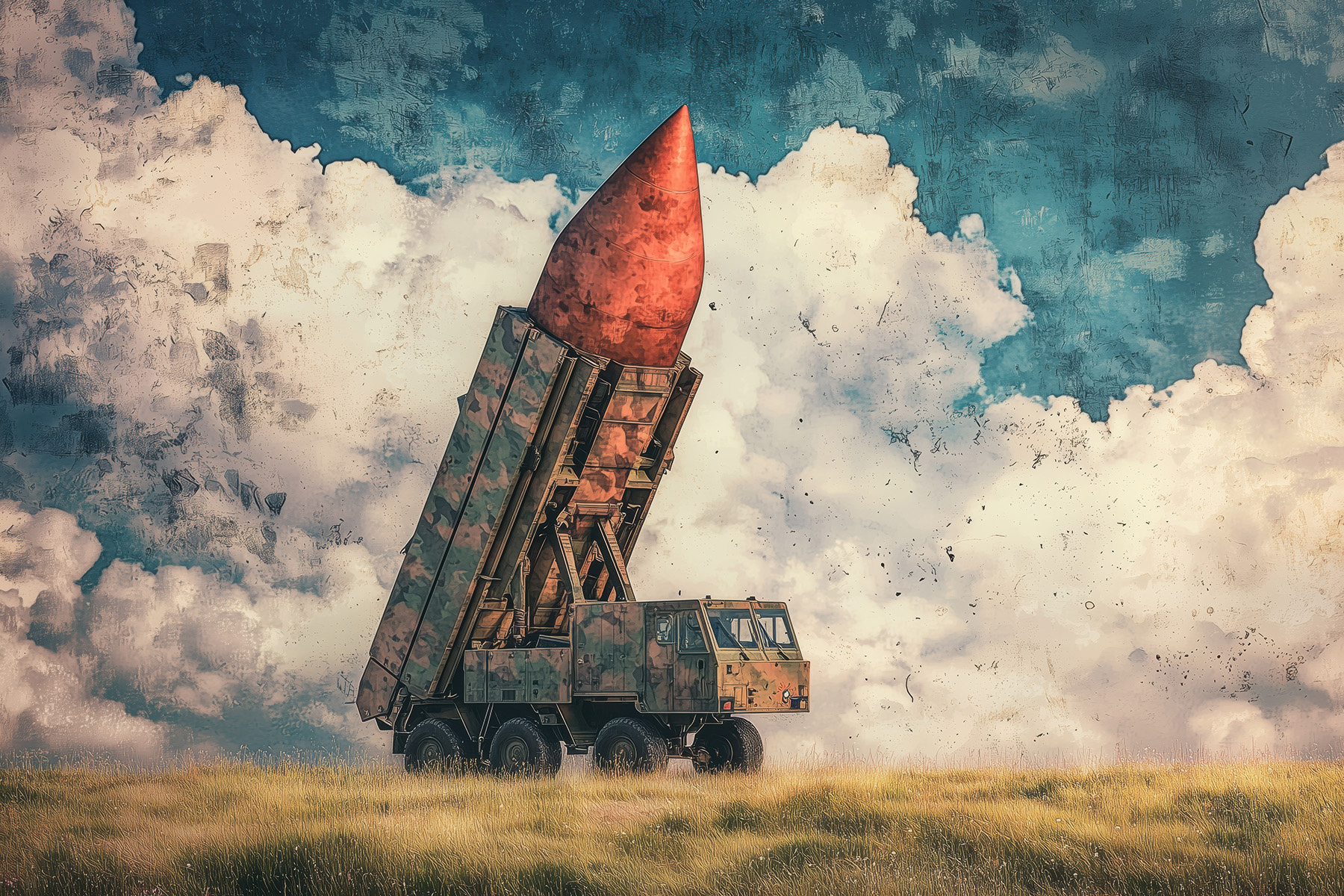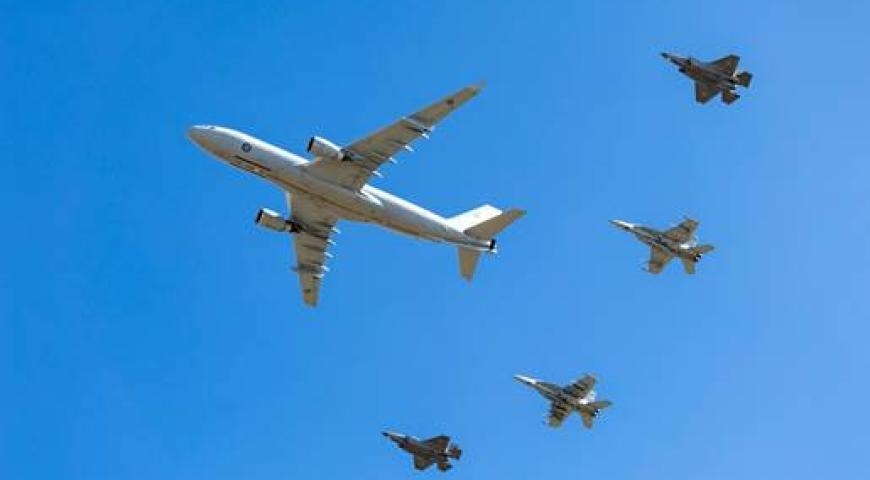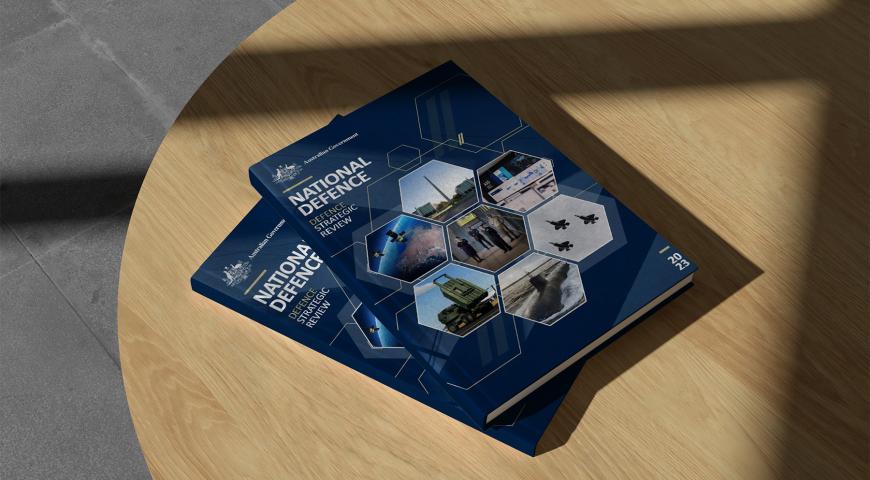Conceptual Framework
Australian Defence Force (ADF) doctrine identifies six interdependent warfighting functions at the operational level: ‘command, situational understanding, force generation and sustainment, force projection, force protection, and force application’.[1] Successful operations require integration across the functions. Each function offers a unique perspective of the requirements for military operations that is useful for concept development. In the context of Contested Access and Manoeuvre (CAM) operations, each function may be viewed from two perspectives. Firstly, each function may be analysed to determine how it contributes to friendly operations, specifically focusing on contested environments. Secondly, countering the enemy’s ability to conduct each function provides various means for disrupting their ability to enter or manoeuvre in an area of operations. The National Defence Strategy focuses on the delivery of six capability effects to achieve a strategy of denial: ‘achieve decision advantage; maintain persistent situational awareness in our primary area of military interest; sustain protracted combat operations; project force; protect ADF forces and supporting critical infrastructure in Australia; and hold a potential adversary’s forces at risk’.[2] These are analogous to the warfighting functions detailed in doctrine and may be considered the application of the functions for prioritising capability investment. However, the warfighting functions provide a broader foundation for conceptual analysis and will be used as the framework for this paper. The following section will analyse how the six ADF warfighting functions relate to CAM concepts that contribute to a strategy of denial.
Warfighting Functions
Command: Command translates political intent into strategic, operational and tactical actions in response to the environment. ADF doctrine defines command as ‘the authority which a commander in the military lawfully exercises over subordinates by virtue of rank or assignment’.[3] As a warfighting function, command includes and is supported by the control function that ‘encompasses the responsibility for implementing orders or directives’.[4] Decision-making is central to command and control (C2) and is often measured by the ability to achieve decision superiority over an adversary. Decision superiority is ‘the ability to make and implement better-informed and more appropriate decisions than an adversary’.[5] C2 arrangements for contested environments must include flexible structures that allow subordinate commanders to exercise initiative following a clear intent. In the ADF, this concept is understood as ‘mission command’ and allows fielded units to maintain the initiative when communications are denied or degraded.[6] Resilient C2 structures promote the continued effectiveness of forces in contested areas. They allow dispersed forces to coordinate effectively to concentrate firepower where needed, and they mitigate the effects of network degradation due to enemy action. This contributes to deterrence through denial by reducing the chances of aggressive acts succeeding.
Counter command contributes to decision superiority by attacking the enemy’s decision-making and communication ability. Such activities may include kinetic targeting of C2 systems and information collection capabilities to degrade system functionality. Deception activities could undermine the adversary’s situational understanding or reduce trust in the information they have. Counter command may also include electromagnetic or cyber attacks to disrupt the adversary’s use of the cyber domain.[7] The cyber domain offers unique opportunities to prevent access to electronic C2 systems. The cyber domain is not geographically restricted, so it may present long-range options unavailable from the other domains.[8] The June 2023 edition of the Military Review provided an example of counter command activities seen in 2022 in the Russian-occupied village of Chornobaivka, Ukraine.[9] Over eight months, Ukrainian forces repeatedly targeted Russian headquarters and their subordinate elements, destroying C2 infrastructure and killing senior commanders. The resulting loss of effective C2 degraded Russian planning and coordination, preventing them from consolidating gains and maintaining momentum. Eventually, the Russians were expelled from the village.[10] Ukraine’s counter command activities ultimately contributed to a counter-manoeuvre effect at the operational level through tactical-level counter-access. By preventing physical access to Russian C2 nodes, Ukraine limited Russia’s freedom of manoeuvre. Counter command contributes to denial by directly defending against an attack or preventing the enemy from successfully realising the potential gains from an attack. With suitable command structures and counter command activities in place, situational understanding is the function underpinning decision superiority.
Situational Understanding: Situational understanding is the foundation that allows commanders to make superior decisions. It is ‘the accurate interpretation of a situation and the likely actions of groups and individuals within it’.[11] Commanders use the targeting process to select appropriate actions to achieve desired effects in response to intelligence data. This process relies on the right commander being fed useful information at a suitable time to enable them to make effective decisions.[12] This requires the collection, management, exploitation, and dissemination of information. In a contested environment, this process relies on deployed commanders having the authorisation and delegation to make appropriate decisions and provide direction.[13] Effective targeting relies on commanders having confidence in the information they are provided with which to make a decision. With modern long-range threat weapons, counter-access or counter-manoeuvre effects may be required at ranges of thousands of kilometres. Therefore, a reliable and trustworthy sensor network that extends to the ranges needed for long-range fires must be established using all domains.[14] The United States Marine Corps Concept for Stand-in Forces recognises the importance of gaining situational understanding at long-range in contested areas. Stand-in forces are intended to operate at the forward edge of friendly operations with an enduring function to win the reconnaissance and counter-reconnaissance battle.[15] Effective long-range sensor networks paired with an efficient targeting enterprise directly support denial. This has been seen in Ukraine, where large force concentrations and movements have stopped, potentially leading to a stalemate. Ukrainian General Valerii Zaluzhnyi observed, ‘Modern sensors can identify any concentration of forces, and modern precision weapons can destroy it.’[16] The pervasiveness of modern sensors and responsive weapon systems significantly degrades the ability to concentrate force or to move without being targeted. This confers an asymmetric advantage to the defender, which lends strength to a strategy of denial.
Opportunities exist to undermine the adversary’s confidence in their targeting enterprise. Such activities may include kinetic attacks against adversary sensors or data management systems. Non-kinetic activities may involve electronic attack, active deception and misinformation, or passive measures such as camouflage and dispersal.[17] These contribute to a counter-manoeuvre effect as they impede the ability of the adversary to achieve a position of advantage. In turn, this contributes to denial by causing an attack to fail, or to deterrence by convincing an enemy that they will be unsuccessful. Capitalising on sound command structures and situational understanding requires generating and sustaining forces to do the work.
Force Generation and Sustainment: Force generation extends from designing the force for potential future conflicts to generating the required forces for imminent or current operations.[18] Sustainment operations ensure the force is appropriately equipped and supplied to perform its role.[19] Forces operating inside contested areas must be dispersed and mobile.[20] Force protection considerations limit the ability for stores to be centrally aggregated, which leads to less efficient supply. Therefore, forces persistently in contested areas must reduce their demand needs for sustainment, or the supply network must compensate for the conditions. This may involve enhanced manufacturing of parts or automated distribution systems.[21] Conversely, forces that temporarily project forward into contested areas require significant resources to enable range and speed for survivability.[22] Well-sustained forces operating in forward locations contribute to denial by preventing adversaries from dominating that area and providing early detection and response options. Resilience in the support network supports deterrence through denial by enabling persistent presence in contested areas.
Degrading the enemy’s force sustainment and logistics has a counter-manoeuvre effect. Manoeuvre forces require large amounts of supplies, such as fuel and weapons, and consume them rapidly. David Fuquea observed that the Imperial Japanese Navy (IJN) aptly demonstrated this during the early years of World War Two.[23] The IJN invested heavily in fast oilers capable of refuelling warships underway. This enabled their ships to rapidly access the large quantities of fuel oil required to move around the Pacific at speed. The ability to move warships at speed enabled the IJN to capitalise on surprise and momentum to achieve the advantage in early engagements. As the war progressed, however, many such oilers were lost, and the IJN lost its ability to manoeuvre effectively at sea. This led to progressively disadvantageous encounters for the IJN, with increasing warship losses and the tide of the war turned.[24] Degrading enemy sustainment and logistics may be achieved through interdiction or counter-access activities such as blockades or sabotage of supplies. Disrupting or degrading enemy sustainment reduces their ability to succeed in an attack or to capitalise on success through momentum. It is a critical contributor to a strategy of denial. Generating and sustaining forces are prerequisites for projecting force to where it is needed.
Force Projection: Force projection involves the movement of forces into appropriate locations to conduct operations.[25] Contested environments increase the risk to force projection assets, increasing the difficulty of projecting meaningful distances.[26] Some analysts, such as Stephen Miller, suggest that long-range precision fires may solve this dilemma.[27] Although long-range weapons offer a means of projecting force with less risk to weapons platforms, they come with limitations. Marcus Hellyer and Andrew Nicholls argued that long-range fires are significantly more expensive than short-range weapons and long-range kill chains are sensitive to disruption.[28] These limitations may be mitigated by pairing shorter-range weapons with survivable launch platforms, such as low-signature aircraft, to release them closer to their targets.[29] Having a mix of both options available to a commander offers flexibility for various scenarios. Possessing the means to project force further into an adversary’s area of operations and hold them at risk complicates the decision calculus to conduct operations. Paired with an effective targeting enterprise, this creates impactful projection to disrupt their combat systems, supporting a strategy of denial and contributing to deterrence.[30] Similar challenges to force projection faced by the adversary may be exploited to contest access and manoeuvre.
Countering force projection is the central theme of contested access and manoeuvre and is directly linked to counter-access and counter-manoeuvre activities. Two key opportunities exist for counter-access activities related to force projection: terrain restrictions and force projection nodes. Maritime choke points are an example of terrain that facilitates counter-access activities. They restrict the manoeuvre potential of maritime assets and allow for the integration of multiple domains, including persistent land-based effects.[31] This combination may be sufficient to prevent maritime assets from moving through. Force projection nodes such as ports and airfields present vulnerabilities that may be exploited to inhibit access by those forces reliant on them. Ports may be susceptible to blockades or mining, and airfields may be vulnerable to long-range strikes or sabotage.[32] Counter-access operations such as these extend force projection ranges for the adversary, which, in turn, reduces their manoeuvre potential through attrition of fuel or energy. The counter-manoeuvre effect of these actions contributes to denial by increasing the probability of successfully defeating an offensive act. To remain viable, forces projecting into contested areas rely on effective force protection measures.
Force Protection: Concurrent with activities seeking to limit the adversary’s freedom of manoeuvre, forces must take measures to preserve their own freedom of manoeuvre and operational effectiveness. Force protection ‘encompasses all measures and means … taken to protect the capability of a force from operational, environmental and occupational threats’.[33] It involves prevention and mitigation measures. Prevention measures aim to stop attacks from reaching defended assets. It includes active measures such as hard-kill defensive systems and protective security, as well as passive measures such as camouflage, concealment, deception, and mobility. Mitigation measures aim to reduce the effects of attacks that reach the target. It includes protection measures such as hardening, strengthening, dispersal and redundancy, and recuperation measures such as firefighting and reconstitution capabilities.[34] The conflict in Ukraine has shown dispersal to be particularly important as a force protection measure. Appropriate C2 measures are critical to allow the concentration of firepower on the enemy without concentrating mass.[35] Effective force protection requires a mix of defensive capabilities, which differs depending on circumstances.[36] Active defences are costly and offer limited operational effectiveness compared to passive measures, which are relatively cheap and provide high returns. This has led some analysts to suggest that active defences should be abandoned in favour of passive defences. However, active defences still contribute an additional layer to defensive capabilities and may provide a deterrent effect.[37] This is especially true for strategic assets such as ports that cannot employ passive defences like mobility. Force protection is critical to deterring and denying enemy offensive success through resilience in contested areas. It also contributes to a counter-manoeuvre effect by reducing the enemy’s confidence in their targeting enterprise, contributing to uncertainty and impeding manoeuvre. Understanding the enemy’s force protection measures is essential in the targeting process.
Effective targeting procedures must account for the enemy’s force protection capabilities. This enables appropriate asset allocation for mission success and increases reliability in predictive information, enabling speed to maintain the initiative.[38] Penetrating enemy defences reduces threat confidence to operate within the range of offensive systems. This provides a counter-manoeuvre effect, limiting their ability to achieve a position of advantage to attack successfully, and supports a strategy of denial. Overcoming the enemy’s defensive measures requires targeting to be followed up by force application to achieve decisive effects.
Force Application: Force application combines manoeuvre and interdiction to create specific effects on a target. Interdiction comprises ‘actions to divert, disrupt, delay or destroy the adversary before they can affect friendly forces’.[39] Interdiction employs kinetic and non-kinetic means to achieve lethal or non-lethal effects, depending on mission requirements.[40] A key characteristic of interdiction is the aim of achieving decisive effects on the adversary before weapon launch. This differentiates it from using force for active force protection, which may engage the weapon after launch. This idea leads to the concept of threat-based counter-access. Under this concept, the aim is to prevent the enemy from entering inside the range from which weapons may be launched. This corresponds to the counterforce layer of IAMD.[41] Doing so carries significant force projection challenges but may provide benefits in weapon expenditure. For example, one Renhai-class guided-missile cruiser has 112 missile tubes, or one H-6M bomber may be carrying 4 CJ-10 land attack cruise missiles.[42] Acknowledging the tactical challenges of targeting warships or bombers, it can be seen that targeting launch vehicles prevents significant numbers of missiles from being launched. This adds the benefit of removing the higher-value launch vehicles from circulation, reducing future attacks. A demonstrated capability to successfully conduct counterforce interdiction outside a threat launch envelope is a strong contributor to deterrence and a strategy of denial. Successful range-based counter-access is dependent on counter-manoeuvre activities occurring outside the desired range.
Counter-manoeuvre activities establish the conditions for counter-access and mitigate the impact if counter-access is unsuccessful at preventing weapon launch. This is because counter-manoeuvre effects limit the ability of attackers to defend, increasing the probability of achieving a decisive effect outside of their launch range. Counter-manoeuvre at such an extended range may take the form of a strategic attack against force projection or C2 nodes. This is counter-access at the tactical level to reduce manoeuvre potential at the operational level. A strategic attack aims ‘to weaken the enemy’s ability or will to engage in conflict or continue an action’.[43] If attackers are able to launch weapons successfully, counter-manoeuvre activities may force them to launch outside their optimum range. This reduces the manoeuvre potential of those systems, which increases the effectiveness of active defence layers and passive defence measures.[44] The relationship between counter-access and counter-manoeuvre is inverse to the conventional understanding of A2/AD, leading to the need for a new conceptual approach. Counter-manoeuvre concepts should consider effects out to the furthest range offensive capabilities can reach and increase in intensity as the threat increases. Providing long-range effects and increasing the intensity commensurate with increasing threat offers a layered approach that significantly reduces the chances of an enemy attack succeeding. Force application appropriately weighted is a unique military contribution to the whole-of-nation approach to a strategy of denial.
Next, Part 3 analyses CAM concepts within the Australian context.
1 Doctrine Directorate, ADF-P-3 Campaigns and Operations, 3rd ed. (Doctrine Directorate, 2023), 13, 46–65.
2 Australian Government, National Defence Strategy, 28–29; Australian Government, Integrated Investment Program, 5–7.
3 Centre for Defence Leadership and Ethics, ADF-P-0 Command, 1st ed. (Doctrine Directorate, 2024), 2.
4 Doctrine Directorate, ADF-P-3 Campaigns and Operations, 107.
5 Doctrine Directorate, 49.
6 Doctrine Directorate, 47–51.
7 Dougherty, “Moving Beyond A2/AD”; Doctrine Directorate, ADF-P-3 Campaigns and Operations, 50–51.
8 Doctrine Directorate, ADF-C-0 Australian Military Power, 2nd ed. (Doctrine Directorate, 2024), 33–34.
9 Lt. Gen. Milford Beagle, Brig. Gen. Jason C. Slider, and Lt. Col. Matthew R. Arrol, “The Graveyard of Command Posts: What Chornobaivka Should Teach Us about Command and Control in Large-Scale Combat Operations,” Military Review, June 2023, 10–24.
10 Beagle, Slider, and Arrol.
11 Doctrine Directorate, ADF-P-3 Campaigns and Operations, 52–55.
12 Doctrine Directorate, ADF-I-3 Targeting, 1st ed. (Doctrine Directorate, 2023), 1–11.
13 Doctrine Directorate, ADF-P-3 Campaigns and Operations, 52–55; Doctrine Directorate, ADF-I-3 Targeting, 1–11.
14 Malcolm Davis, “The ADF Needs to See at Long Range to Strike at Long Range,” The Strategist, January 24, 2023,https://www.aspistrategist.org.au/the-adf-needs-to-see-at-long-range-to-strike-at-long-range/.
15 United States Marine Corps, A Concept for Stand-in Forces (USMC, 2021).
16 Randy Noorman, “The Return of the Tactical Crisis,” Modern War Institute, March 27, 2024,https://mwi.westpoint.edu/the-return-of-the-tactical-crisis/.
17 Doctrine Directorate, ADF-P-3 Campaigns and Operations, 55.
18 Doctrine Directorate, 56–58.
19 Doctrine Directorate, 56–58.
20 United States Marine Corps, A Concept for Stand-in Forces, 18.
21 United States Marine Corps, 21–22.
22 Marcus Hellyer and Andrew Nicholls, “‘Impactful Projection’: Long-Range Strike Options for Australia,” December 12, 2022,http://www.aspi.org.au/report/impactful-projection-long-range-strike-options-australia.
23 David C. Fuquea, “Advantage Japan: The Imperial Japanese Navy’s Superior High Seas Refueling Capability.,” Journal of Military History 84, no. 1 (January 1, 2020): 213–35.
24 Fuquea.
25 Doctrine Directorate, ADF-P-3 Campaigns and Operations, 58–59.
26 Malcolm Davis, “National Defence Strategy: Impactful Projection Constrained,” The Strategist, April 24, 2024,https://www.aspistrategist.org.au/defence-strategic-review-impactful-projection-constrained/.
27 Stephen W. Miller, “Breaking A2D2 With Long Range Fires: Enhancing the Delivery of Long Range Precision Fires (LRPF) Is Being Driven Largely as a Potential Response to the Increasing Presence of A2/AD (Anti-Access Area Denial) Defences on the Battlefield,” Armada International, no. 1 (February 1, 2021): 34–38.
28 Hellyer and Nicholls, “‘Impactful Projection.’”
29 Hellyer and Nicholls; United States Marine Corps, A Concept for Stand-in Forces, 5, 14–16.
30 Kearn, “Air-Sea Battle and China’s Anti-Access and Area Denial Challenge,” 137.
31 United States Marine Corps, A Concept for Stand-in Forces, 14–16.
32 Colby B. Edwards, “Enabling a Three-Dimensional Integrated Defense,” Defending Air Bases in an Age of Insurgency: Volume II (Air University Press, 2019), 13,https://www.jstor.org/stable/resrep19551.13; Air and Space Power Centre, ADF-I-3 ADF Air Power, 1st ed. (Doctrine Directorate, 2023), 82.
33 Doctrine Directorate, ADF-P-3 Campaigns and Operations, 59.
34 Joint Doctrine Centre, ADDP 3.22 Force Protection, 1st ed., Operations Series (Defence Publishing Services, 2015).
35 Todd A. Schmidt, “The Russia-Ukraine Conflict Laboratory: Observations Informing IAMD.,” Military Review 104 (March 2, 2024)
36 United States Marine Corps, A Concept for Stand-in Forces, 18.
37 Tangredi, “Anti-Access Strategies in the Pacific,” 14–17.
38 United States Marine Corps, Warfighting, Marine Corps Doctrinal Publication (MCDP) 1 (Washington, DC: USMC, 1997), 72–76.
39 Doctrine Directorate, ADF-P-3 Campaigns and Operations, 110.
40 Doctrine Directorate, 46–65, 109–10.
41 SQNLDR Robert Vine, “Missile Defence: More Than Hitting a Bullet with a Bullet - Robert Vine,” Williams Foundation, October 11, 2020,https://www.williamsfoundation.org.au/post/missile-defence-more-than-hitting-a-bullet-with-a-bullet-robert-vine.
42 Eric Wertheim, “Type 055 Renhai-Class Cruiser: China’s Premier Surface Combatant,” U.S. Naval Institute - Proceedings 149/3/1441 (March 2023),https://www.usni.org/magazines/proceedings/2023/march/type-055-renhai-class-cruiser-chinas-premier-surface-combatant; Peter Suciu, “H-6: The Old Chinese Bomber That Has Transformed Into a Missile Truck,” The National Interest (The Center for the National Interest, November 22, 2023),https://nationalinterest.org/blog/buzz/h-6-old-chinese-bomber-has-transformed-missile-truck-207438.
43 Joint Chiefs of Staff, Joint Publication 3-0 Joint Operations Change 1 (United States Department of Defense, 2018), III–35.
44 Tom Karako and Masao Dahlgren, Complex Air Defense: Countering the Hypersonic Missile Threat (Center for Strategic and International Studies (CSIS), 2022),https://www.jstor.org/stable/resrep39470; Vine, “Missile Defence.”
Defence Mastery
Contested Access and Manoeuvre: Part 2 © 2025 by . This work is licensed under CC BY-NC-ND![]()
![]()
![]()
![]()
Please let us know if you have discovered an issue with the content on this page.
Comments
Start the conversation by sharing your thoughts! Please login to comment. If you don't yet have an account registration is quick and easy.




